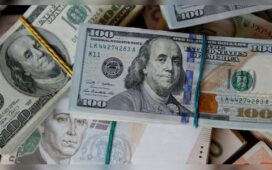US President Donald Trump, during his inauguration speech on Monday, announced the establishment of an external revenue service to collect tariffs from foreign countries exporting goods to America.
“I will immediately begin the overhaul of our trade system to protect American workers and families. Instead of taxing our citizens to enrich other countries, we will tariff and tax foreign countries to enrich our citizens,” Trump said.
“For this purpose, we are establishing the external revenue service to collect all tariffs, duties, and revenues. It will be massive amounts of money pouring into our treasury, coming from foreign sources. The American dream will soon be back and thriving like never before, to restore competence and effectiveness to our federal government,” he added.
This announcement follows Trump’s threat last month to impose 100 per cent tariffs on Brazil, Russia, India, China, and South Africa (the BRICS nations) if they create a new BRICS currency or back any other currency to replace the US dollar as the world’s reserve currency.
Trump’s proposed tariffs may primarily target China, given the far larger trade imbalance. A fresh round of US-China trade wars could potentially benefit India by redirecting investments and manufacturing opportunities away from China. Trump has, however, also flagged high tariffs imposed by India repeatedly. At an election rally, he criticised China, Brazil, and India, calling India a “tariff king” and a “trade abuser.”
The US is India’s largest trade partner, with bilateral trade reaching almost $120 billion in FY24 — slightly higher than India’s trade with China. However, unlike China, India’s trade relationship with the US is favourable, making the US a vital source of foreign exchange.
Despite attempts to diversify its exports, India’s dependence on the US has grown over the past decade. According to official 2022–23 data, the US accounts for 18% of India’s exports, compared to 10% in 2010–11. India’s export basket to the US is well-diversified, benefiting industries ranging from textiles to electronics and engineering.
During his first term, Trump invoked national security provisions to impose a 25% tariff on steel and a 10% tariff on aluminium from India and other countries, breaking with the tradition of not targeting friendly nations. President Biden chose to negotiate with India and the European Union rather than lift these tariffs.
Discover the Benefits of Our Subscription!
Stay informed with access to our award-winning journalism.
Avoid misinformation with trusted, accurate reporting.
Make smarter decisions with insights that matter.
Choose your subscription package






